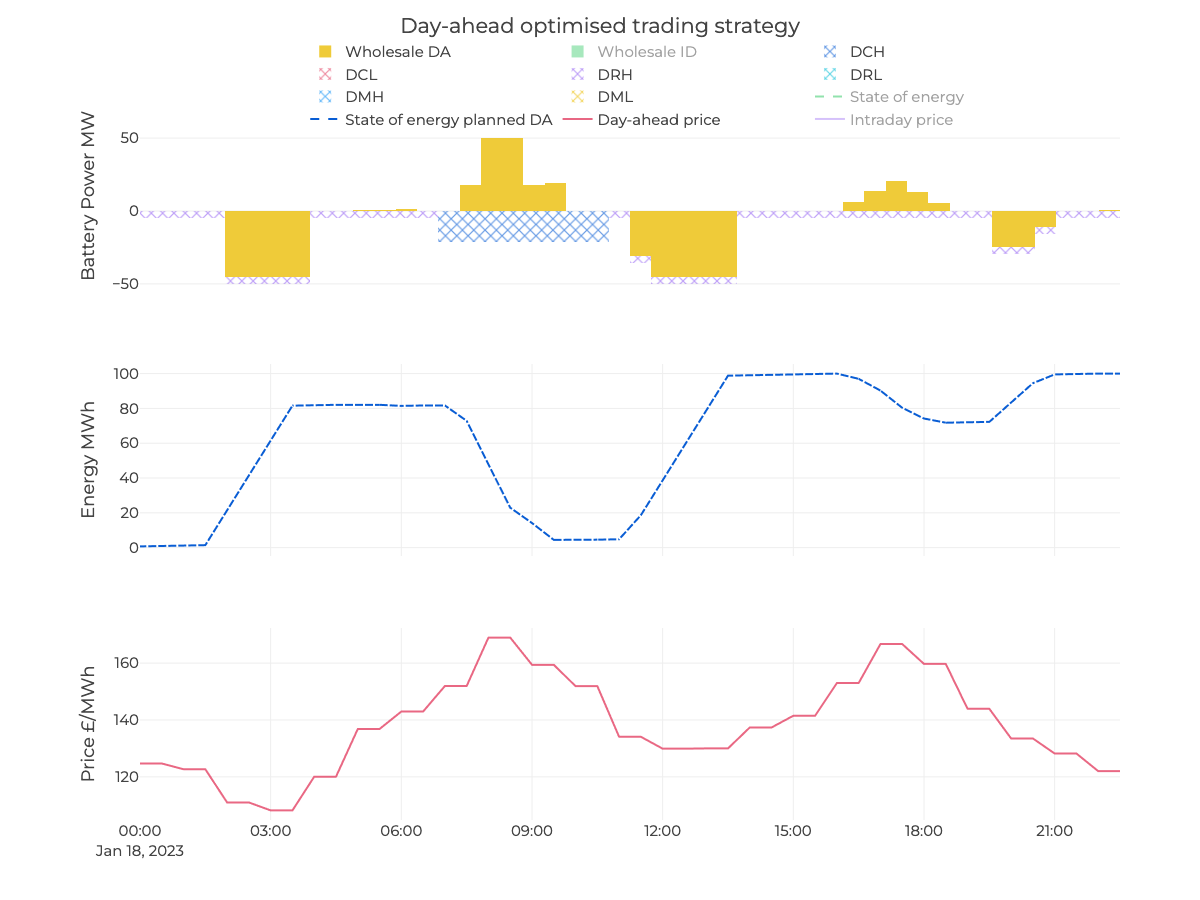Intraday revenues (v3.2)
Modelling the uplift in revenues due to intraday trading
How much can day-ahead revenues be increased by re-optimizing in the intraday market?
To quantify intraday trading revenues for batteries, we model the revenue uplift due to optimizing in frequency response plus wholesale day-ahead and intraday; compared to optimizing in frequency response plus wholesale day-ahead only.
We calculate historical revenues using our dispatch model with and without trading in the intraday market
Here, the intraday price is the RPD of the EPEX intraday order book. Cycling and state-of-energy limits for the battery are respected.
Looking at one day's optimization, without & with intraday trading
Firstly, looking at only wholesale day-ahead and frequency response markets, here is what our optimized battery does. This excludes intraday.

- The battery charges and discharges when the day-ahead price is low and high.
- It also provides a small level of frequency response services when profitable to do so. More on this in Day-ahead and frequency response revenues.
Next, we add re-optimise our battery for the intraday market.

- Extra charging (green) occurs early in the morning when intraday prices are low, with extra discharging at 9am and 5pm when intraday prices are high.
- The intraday optimisation respects the battery's min and max capacity and power limits, as well as maximum cycling constraints. We end up the day with a higher state-of-energy than we would have with just the day-ahead position.
We calculate intraday uplift as the median daily increase in revenues due to this reoptimization
Comparing the revenues from the Day Ahead only optimization (day-ahead wholesale and, for the ancillary focus strategy, frequency response markets) to the Day Ahead + Intraday, historically, we get a % uplift due to the intraday trading. We look at October 2022 - November 2023.
Intraday uplift is lower for batteries providing frequency response
There is lower availability to trade in intraday when providing a frequency response contract, so the upilft is lower for those forecast runs which include ancillary services.
In the future, we get an increasing intraday uplift when coupled with a frequency response strategy
Below, we show how the intraday uplift (%) evolves with time for the Merchant + ancillaries optimization strategy, due to frequency response saturation.

- We will get increasing saturation across frequency response markets, as more and more batteries come online vs the GW of frequency response that the ESO will procure.
- Individual batteries will provide lower volumes in frequency response over the forecast horizon. This means they'll have more availability to do intraday trading and as a result the revenue uplift increases.
For the merchant-only strategy, the volumes available to trade intraday do not change
So, we assume that moving forward, the intraday uplift for merchant-only remains constant.
Updated about 2 months ago